Abstract
1 Nasal airway resistance (NAR) was measured by anterior rhinometry in ten volunteers with allergic rhinitis. Measurements before and after challenge with three concentrations of histamine diphosphate showed significant rises in NAR for each challenge. 2 In a double-blind, crossover study with the same patients triprolidine (2.5 mg) and pseudoephedrine (60 mg) were shown to be equally effective in reducing the rise in NAR produced by histamine challenge to one nostril; both were significantly better than placebo. 3 The rise in NAR of both nostrils after histamine challenge to one nostril was significantly reduced after pseudoephedrine compared with placebo. This suggests that pseudoephedrine is effective in preventing reflex mucosal congestion in the unchallenged nostril. 4 No increase in the pulse rate or blood pressure of the volunteers was detected after either drug.
Full text
PDF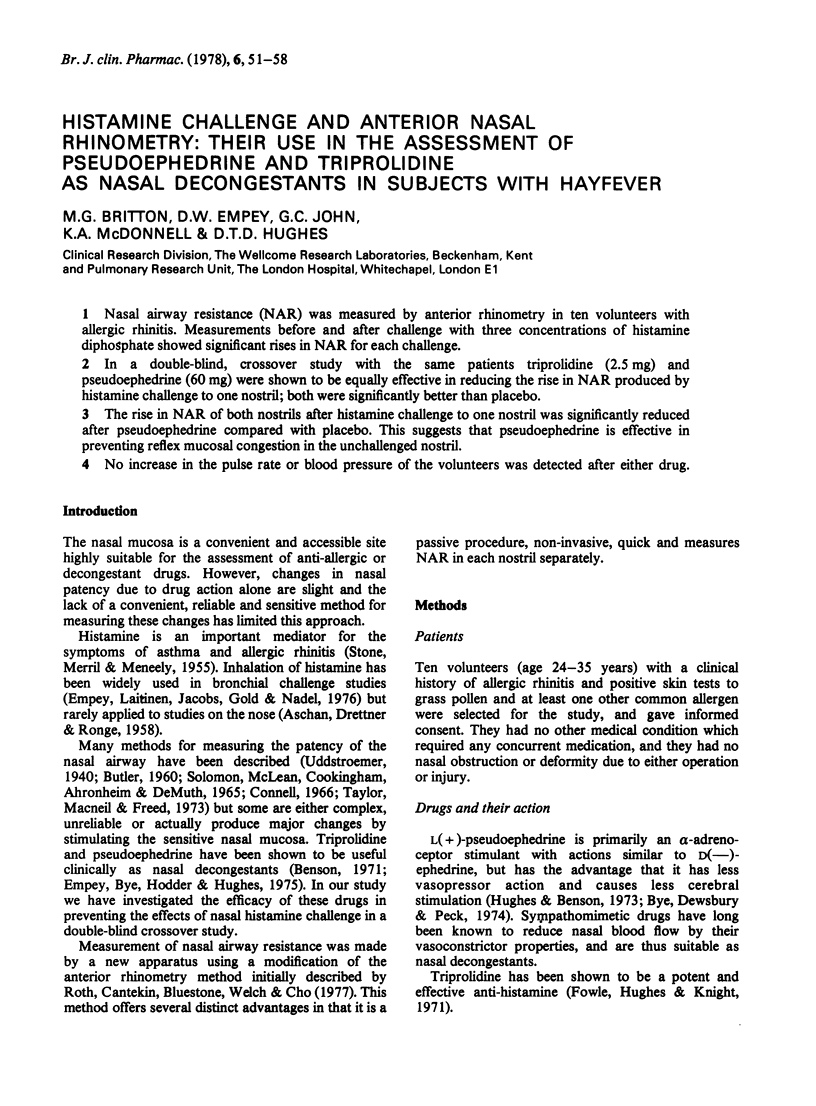
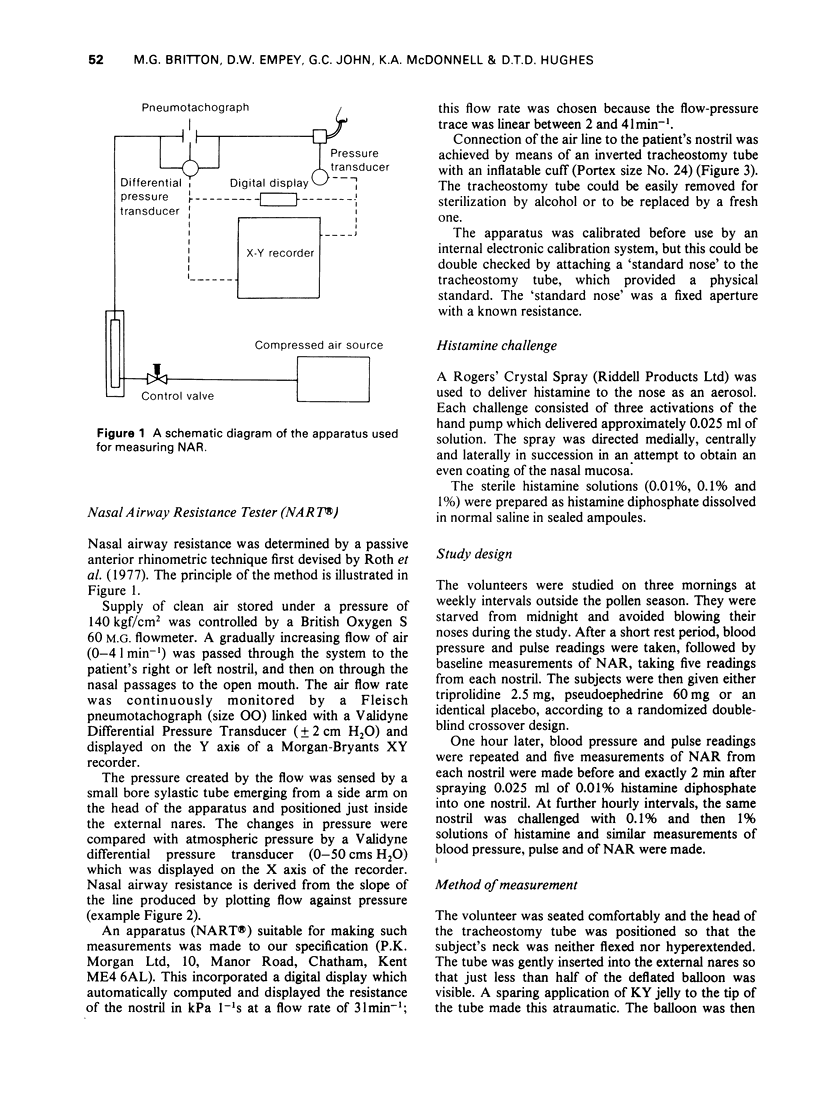
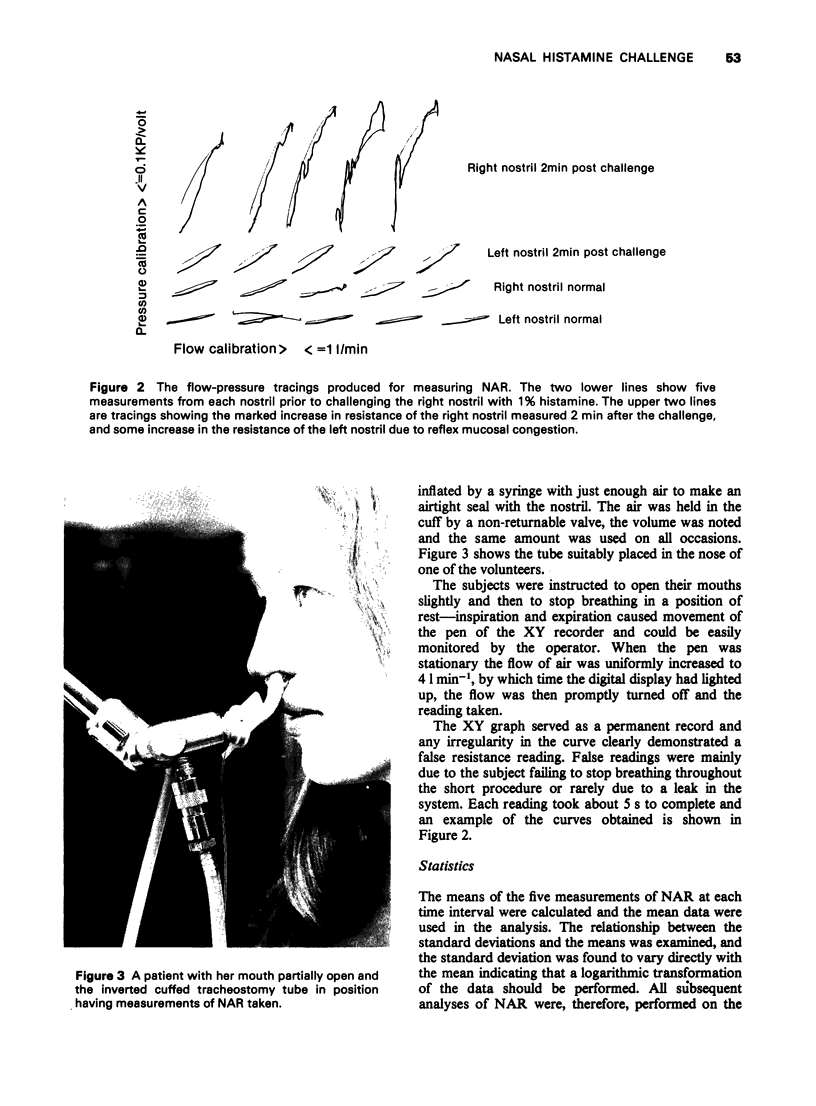
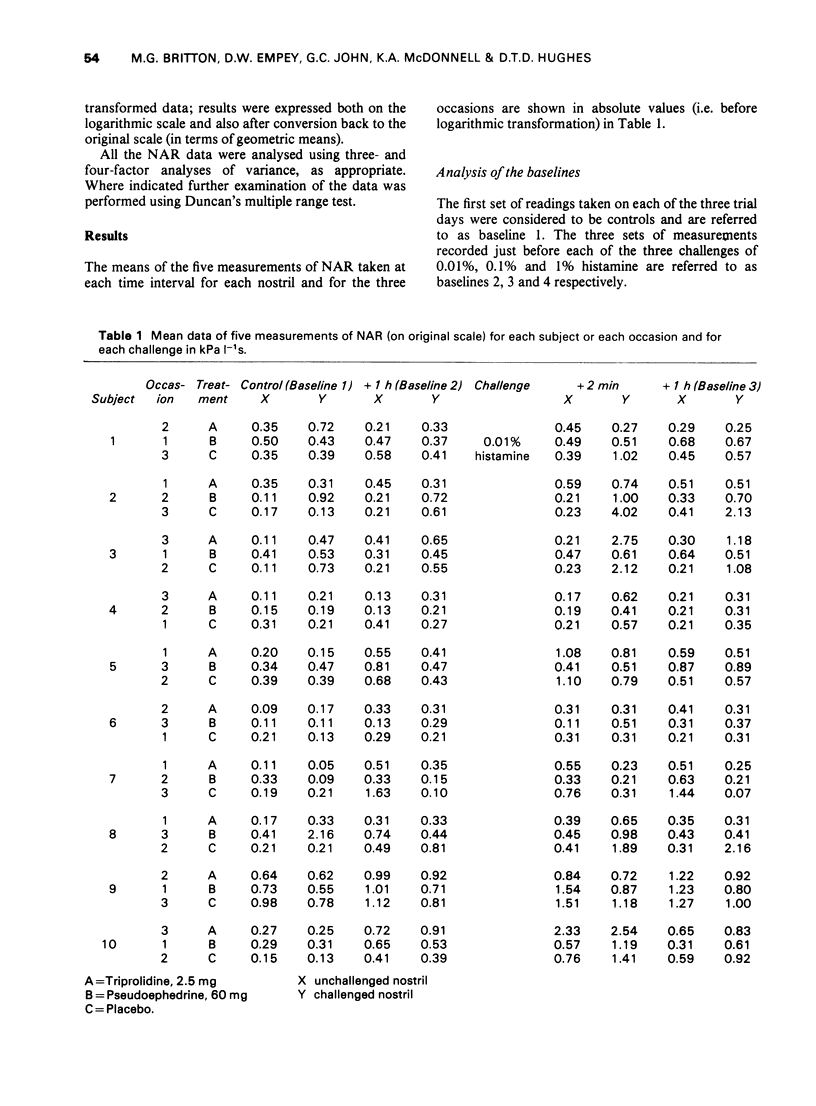
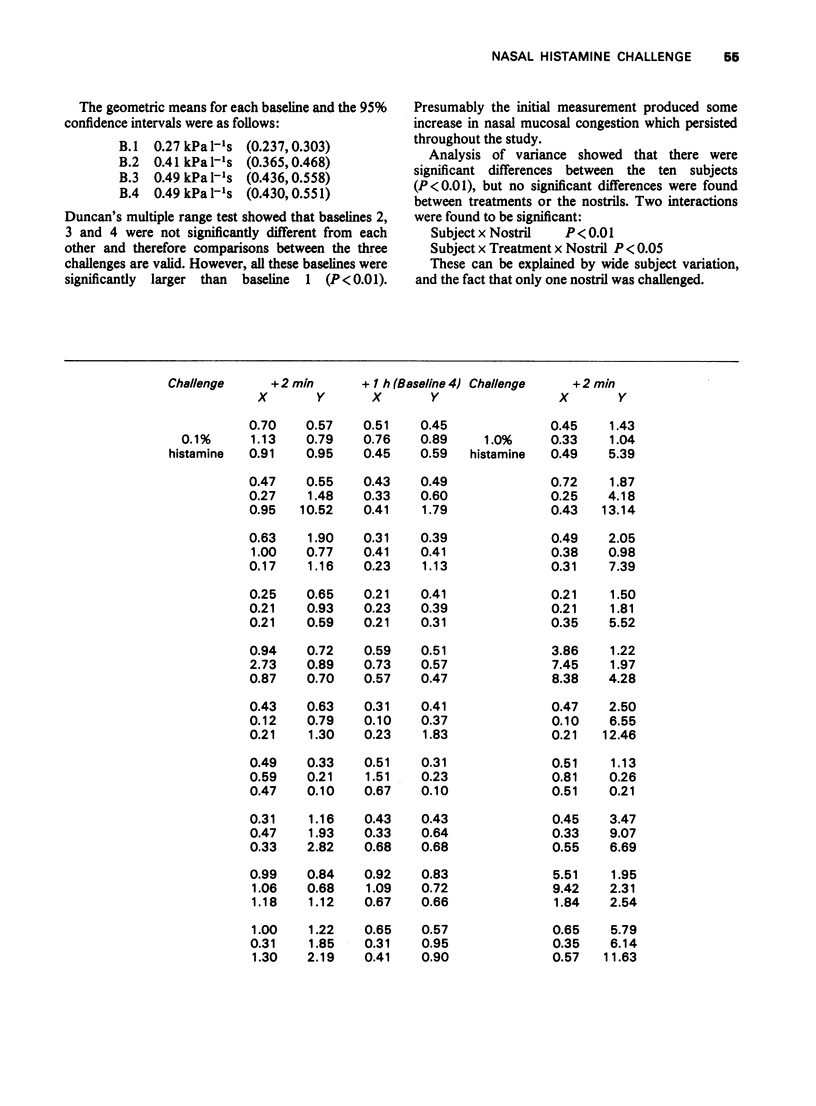

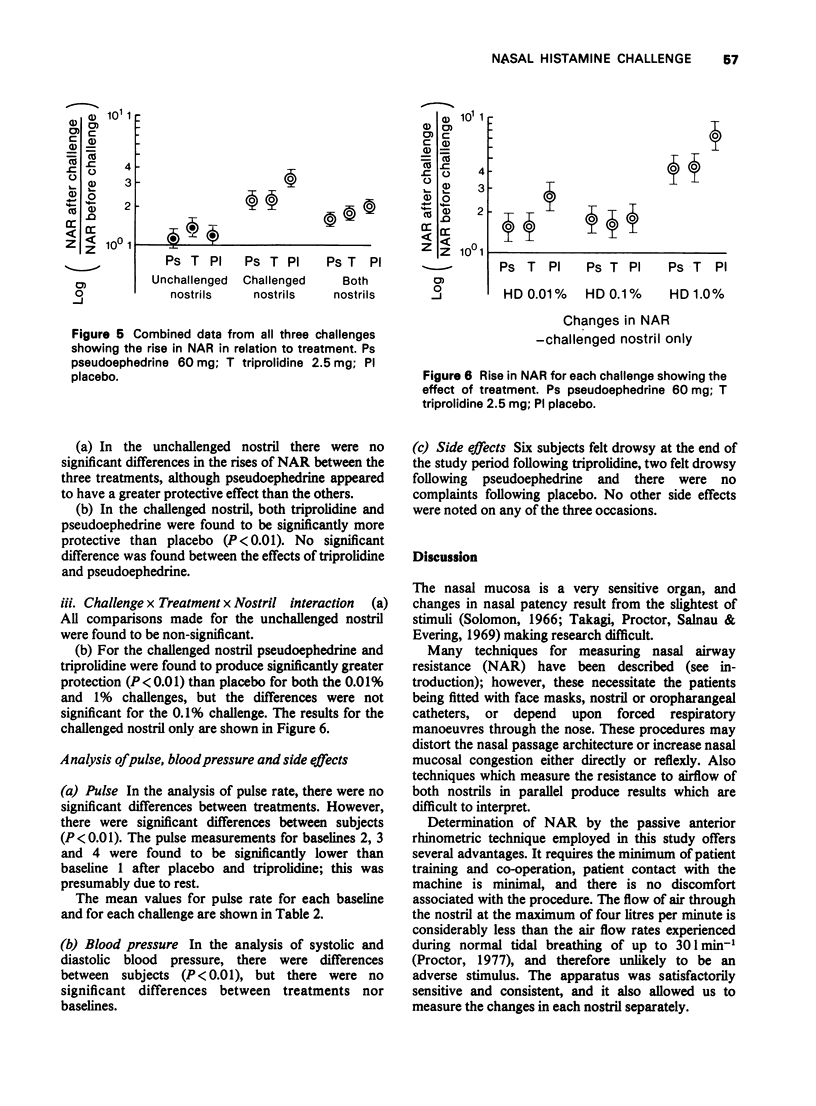

Images in this article
Selected References
These references are in PubMed. This may not be the complete list of references from this article.
- BUTLER J. The work of breathing through the nose. Clin Sci. 1960 Feb;19:55–62. [PubMed] [Google Scholar]
- Connell J. T. An instrument for measuring the effective cross-sectional nasal airway. J Allergy. 1966 Mar;37(3):127–134. doi: 10.1016/0021-8707(66)90087-6. [DOI] [PubMed] [Google Scholar]
- Empey D. W., Laitinen L. A., Jacobs L., Gold W. M., Nadel J. A. Mechanisms of bronchial hyperreactivity in normal subjects after upper respiratory tract infection. Am Rev Respir Dis. 1976 Feb;113(2):131–139. doi: 10.1164/arrd.1976.113.2.131. [DOI] [PubMed] [Google Scholar]
- Fowle A. S., Hughes D. T., Knight G. J. The evaluation of histamine antagonists in man. Eur J Clin Pharmacol. 1971 Sep;3(4):215–220. doi: 10.1007/BF00565009. [DOI] [PubMed] [Google Scholar]
- Proctor D. F. The upper airways. I. Nasal physiology and defense of the lungs. Am Rev Respir Dis. 1977 Jan;115(1):97–129. doi: 10.1164/arrd.1977.115.1.97. [DOI] [PubMed] [Google Scholar]
- Roth R. P., Cantekin E. I., Bluestone C. D., Welch R. M., Cho Y. W. Nasal decongestant activity of pseudoephedrine. Ann Otol Rhinol Laryngol. 1977 Mar-Apr;86(2 Pt 1):235–242. doi: 10.1177/000348947708600216. [DOI] [PubMed] [Google Scholar]
- SOLOMON W. R., MCLEAN J. A., COOKINGHAM C., AHRONHEIM G., DEMUTH G. R. MEASUREMENT OF NASAL AIRWAY RESISTANCE. J Allergy. 1965 Jan-Feb;36:62–69. doi: 10.1016/0021-8707(65)90033-x. [DOI] [PubMed] [Google Scholar]
- Solomon W. R. Comparative effects of transient body surface cooling, recumbency, and induced obstruction in allergic rhinitis and control subjects. J Allergy. 1966 Apr;37(4):216–222. doi: 10.1016/0021-8707(66)90116-x. [DOI] [PubMed] [Google Scholar]
- Takagi Y., Proctor D. F., Salman S., Evering S. Effects of cold air and carbon dioxide on nasal air flow resistance. Ann Otol Rhinol Laryngol. 1969 Feb;78(1):40–48. doi: 10.1177/000348946907800104. [DOI] [PubMed] [Google Scholar]
- Taylor G., Macneil A. R., Freed D. L. Assessing degree of nasal patency by measuring peak expiratory flow rate through the nose. J Allergy Clin Immunol. 1973 Oct;52(4):193–198. doi: 10.1016/0091-6749(73)90057-2. [DOI] [PubMed] [Google Scholar]



